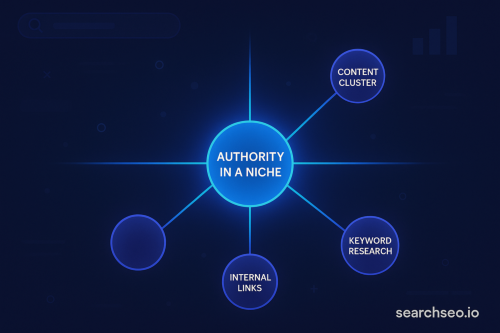Keyword targeting is more than sprinkling a few search terms into your content and hoping Google smiles upon you. Done right, it’s a deliberate process that connects search intent with content relevance, helping your pages show up when—and where—it matters most.
Let’s unpack what keyword targeting really means, how it’s evolving, and how you can build a strategy that actually works.

What is keyword targeting?
At its core, keyword targeting is the practice of selecting and using specific words or phrases in your website content so search engines can match your pages to the right queries.
Think of it as matchmaking: Google is trying to connect a searcher’s question with the most relevant answer, and keyword targeting tells Google, “Hey, I’ve got the answer you’re looking for.”
Keyword targeting definition:
The process of identifying and strategically placing search terms within your content to improve search visibility, click-through rate (CTR), and relevance for users and search engines.
A few quick clarifications:
- It’s not just about ranking #1. Targeting can help you own high-intent queries even if you’re not at the very top.
- It’s not only about exact matches. Google’s algorithms understand context now, meaning semantic relevance often matters more than rigid phrasing.
Why keyword targeting matters in SEO
- Organic visibility: Without keyword targeting, your chances of showing up for relevant queries drop significantly.
- CTR improvement: The right keywords help your snippets match searcher intent, increasing clicks.
- Algorithm signals: Search engines weigh keyword placement (titles, headings, content) alongside content quality, backlinks, and engagement.
Example:
- Weak keyword use: “Our platform is great for business” (too vague, no keyword relevance).
- Strong keyword use: “Our platform improves CTR with niche website keyword targeting strategies” (clear, relevant, intent-focused).
Types of keyword targeting you should know
Exact match keyword targeting
Matching the exact search term in your content and metadata. Works well for high-intent, transactional queries.
Broad match & modified broad
Covers variations and related terms, offering wider reach but less control over intent.
Phrase match keyword targeting
Matches searches containing your phrase with additional words before or after.
Negative keyword targeting
Filtering out terms you don’t want to rank for—especially powerful in PPC campaigns to prevent wasted clicks.
Example: If you sell premium furniture, you might use “cheap” as a negative keyword.
Contextual keyword targeting: Beyond exact matches
Today’s SEO is about contextual relevance, not keyword stuffing. Google’s semantic search uses natural language processing (NLP) to understand intent.
This means your page can rank for “best email tools” even if the exact phrase doesn’t appear—if the surrounding content, synonyms, and related concepts align.
Pro tip: Use related terms (LSI keywords) naturally in your headings and body copy to help search engines connect the dots.
Keyword targeting strategy: How to do it right in 2025
1. Start with intent-driven keyword research
Tools like Google Keyword Planner, Ahrefs, or Semrush help identify search terms, but you need to filter them by search intent—informational, navigational, transactional.
2. Map keywords to the buyer’s journey
Different keywords target different funnel stages:
- Awareness: “what is negative keyword targeting”
- Consideration: “best keyword targeting strategy”
- Decision: “SearchSEO CTR boost for keyword targeting”
3. Test impact with SearchSEO
You can simulate and track CTR changes for your targeted keywords before going all-in. It’s a low-risk way to validate opportunities.
4. Incorporate long-tail and niche-specific keywords
- Long-tail keyword targeting captures highly specific queries (“B2B SaaS keyword targeting for lead gen”).
- Niche website keyword targeting ensures your content resonates with a focused audience rather than competing for generic, high-volume terms.
Common mistakes to avoid with keyword targeting
- Keyword stuffing – Search engines penalize unnatural repetition.
- Ignoring intent – High volume means nothing if users bounce instantly.
- Over-relying on tools – Data is essential, but so is audience insight.
- Never reviewing performance – Keywords shift in relevance; monitor quarterly.
How to measure success of your keyword targeting
Track performance with:
- Google Search Console (GSC) – Impressions, clicks, CTR by keyword.
- Google Analytics – Organic sessions, bounce rate, conversions.
- Rank trackers – SERP positions over time.
Example: After running a CTR boost campaign with SearchSEO, one client saw a +35% increase in clicks for their top three keywords—without changing rankings.
Final thoughts: Keyword targeting in the age of AI search
Generative AI is changing search. Users get instant answers, but they still click results they trust. That means intent and context outweigh sheer volume.
If you focus on genuinely helpful content that answers real questions, keyword targeting becomes the bridge between what people want and what you deliver.


.svg)

.svg)
%201.png)








.svg)